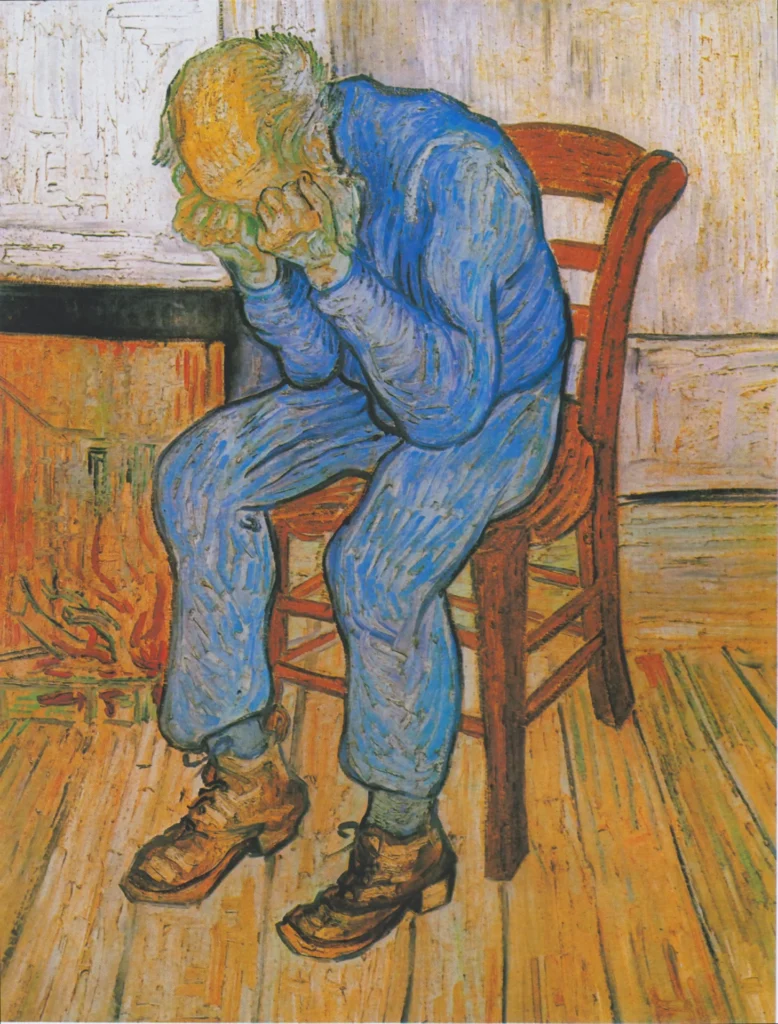At Eternity’s Gate (1890)
Created in May 1890 by Vincent van Gogh while he resided in an asylum, At Eternity's Gate captures the essence of sorrow through the depiction of an elderly man in despair. This work, reimagined from an earlier lithograph, symbolizes the artist's battles with mental health and existential questions. The mere simplicity of the composition, featuring a solitary man on a wooden chair, conveys deep feelings of hopelessness while hinting at an underlying faith in eternity. This emotional depiction continues to resonate with viewers, showcasing Van Gogh's immense talent and tragic narrative.
May 1890
About the Artwork
Vincent van Gogh painted At Eternity's Gate during a tumultuous period of his life, marked by a significant decline in his mental health. He found solace at the asylum in Saint-Rémy de Provence, where he channeled his inner turmoil into art. The inspiration for this painting originated from an earlier lithograph titled 'Worn Out,' which he completed in 1882 after encountering Adrianus Jacobus Zuyderland, a war veteran in an almshouse. While he grappled with feelings of despair, financial struggles, and existential crises, van Gogh's faith in a life beyond suffering emerges through the painting's title. The choice of blue hues emphasizes the emotional weight upon the figure, contrasting with the simplicity of the environment. This work was among his last as he faced the impending tragedy of his life end, reflecting both the artist's struggles and an enduring essence of hope.
Did You Know
At Eternity’s Gate was created during the final months of Van Gogh’s life, as he grappled with mental illness. Just two months after finishing this painting, he tragically ended his life, making this artwork an emotional culmination of his experiences.
The use of blue in the clothing of the figure is emblematic in Van Gogh’s work, often representing despair and sadness. This choice not only enhances the emotional impact of At Eternity’s Gate but also allows viewers to connect with the artist’s inner turmoil.
Van Gogh’s approach in At Eternity’s Gate was notably influenced by earlier artists, especially Hubert von Herkomer. The simplicity of composition and exploration of human emotion in his paintings profoundly resonated with Van Gogh, evident in this poignant portrayal.










